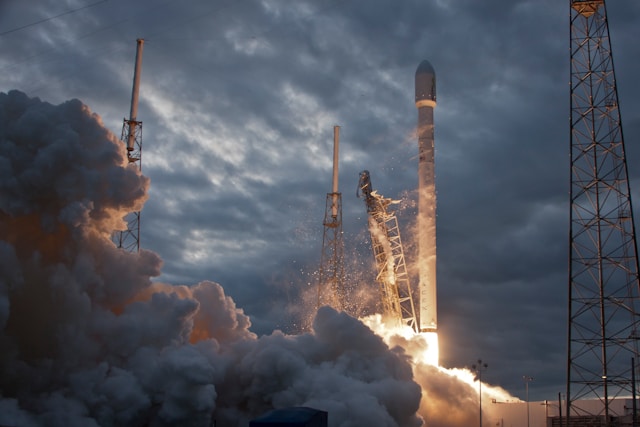Scientists are puzzled as the 55-year-old Skynet-1A satellite moves halfway across the world, raising concerns over potential space collisions.
A baffling space mystery has experts scrambling for answers after Britain’s oldest satellite, Skynet-1A, was discovered to have moved to a new orbital position thousands of miles from where it had been stationed for decades. The unexpected shift has raised alarms, with scientists describing the satellite as a “ticking time bomb” in orbit.
Skynet-1A, launched back in 1969 to support British military communications, had faithfully remained positioned over the east coast of Africa for more than half a century. But recent observations revealed that the satellite now hovers some 22,369 miles above the Americas — a move that appears to defy the natural drift expected of such ageing, inactive space hardware.
The big question: how did this decades-old relic of the early space race suddenly end up halfway around the globe? Theories have been swirling, but concrete answers remain elusive. Space consultant Dr Stuart Eves, who has been poring over satellite catalogues, National Archive records, and other historical data, admitted to the BBC that the trail has gone cold. “Whoever moved Skynet-1A did us few favours,” he remarked. “There are no clear records of who authorised this manoeuvre, and any documentation that might explain it has long since disappeared.”
The mystery deepens with the satellite’s current predicament. Now located at approximately 105 degrees west, Skynet-1A is stuck in what experts refer to as a “gravity well” — a stable but precarious region where it oscillates like a marble in a bowl. “It drifts back and forth in this orbital groove,” Eves explained. “The problem is, because it’s effectively dead, it poses a collision risk to other satellites that are very much active and crucial to our modern communications infrastructure.”
The satellite’s new position significantly increases the chances of an unintended collision, a concern heightened by its inability to respond to control commands. The UK remains responsible for Skynet-1A under international agreements, meaning any potential accident could have serious consequences, both diplomatically and financially. “This satellite is like space junk with an owner’s name on it,” warned Eves. “If it hits something, we’re still accountable.”
Astronomers suspect that the satellite’s movement could have been triggered by a thruster burn — a command likely issued back in the 1970s, possibly to reposition it during its active years. However, any records indicating who authorised the burn, or even if it was intentional, have vanished into the mists of time. This absence of documentation has left scientists frustrated and concerned, given that Skynet-1A’s erratic behaviour could jeopardise newer, highly valuable satellites sharing its orbital neighbourhood.
For the scientific community, tracking and predicting the path of old satellites is challenging enough without unexpected shifts like this one. Dr Eves and other astronomers have called for a renewed focus on monitoring ageing satellites and their orbits to prevent potential collisions in the future. As the number of objects in space continues to grow, such incidents serve as stark reminders of the pressing need for better orbital management.
Meanwhile, efforts are now underway to assess whether Skynet-1A can be nudged into a more stable, less risky position. However, given the satellite’s age and its lack of functional communication systems, any attempt to intervene might be impossible. “We’re essentially dealing with a ghost ship in orbit,” an anonymous space expert noted.
This latest development also raises questions about the long-term sustainability of space operations, particularly as more countries and private enterprises launch satellites at an ever-increasing rate. With space already crowded, the implications of uncontrolled, ageing satellites drifting unpredictably could have dire consequences.
For now, Skynet-1A remains a relic of the past, stubbornly orbiting Earth with an uncertain future. The hope is that scientists will find a way to mitigate the risks before an unforeseen collision turns a curious mystery into a costly disaster. But until then, it serves as a stark reminder of the hidden dangers lurking in the vast expanse of space.
